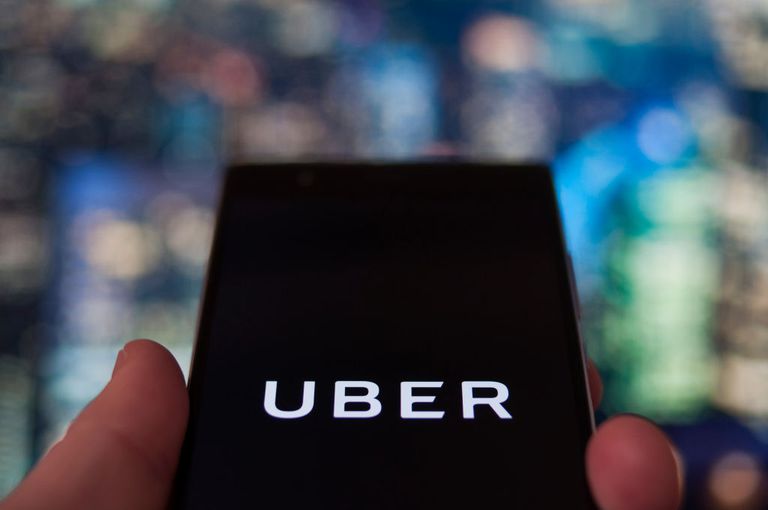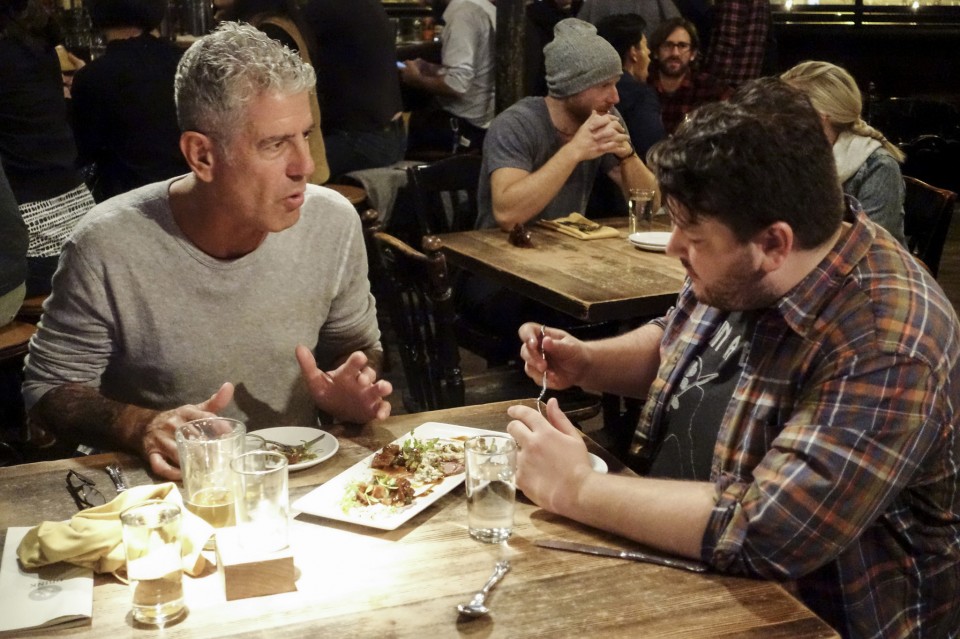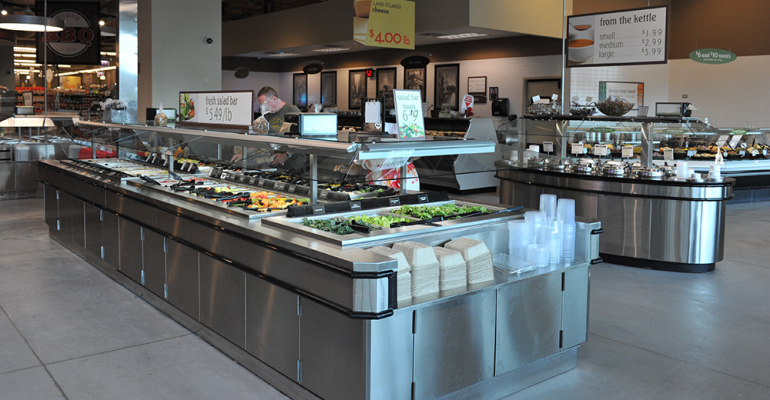
Jun 14, 2018
Chloe Aiello | CNBC | June 11, 2018
Ride-hailing apps, like Uber, have become known as safer alternatives to driving when intoxicated. Now the company is looking to learn a lot more about its late-night riders.
Uber filed a patent application Thursday, first spotted by CNN, that envisions using machine learning to detect whether a potential passenger is behaving abnormally. The patent application is vague about what exactly constitutes an “abnormal state,” but seems to be referring to intoxication and fatigue.
The system tracks user behavior based on typing speed and accuracy, device angle, walking speed and more. It plugs that information into an algorithm, along with additional information details about when and where the ride was requested.
If a request comes in late from an area packed with bars, and the user keeps dropping their phone, it is a pretty good indicator that passenger is drunk.
When an altered user is identified, the application explains, there are a number of different options, including matching the user with specific drivers, alerting the driver about a user’s possible intoxication, and modifying pickup or drop-off locations. The application says the technology is a means to avoid “safety incidents and personal conflict incidents, [that] can occasionally occur when users and/or providers behave uncharacteristically.”

Jun 8, 2018
Ashok Selvam | Eater Chicago | June 8, 2018
Anthony Bourdain felt a connection with Chicago, and many of the city’s residents are reeling on Friday morning after hearing of his death. Bourdain brought the national spotlight to Burt’s Place’s pizza in the suburbs, the South Side’s mother-in-law sandwich, and Hot Doug’s gourmet sausages. Back in 2009, when No Reservations aired its Chicago episode, he called the city “a colossus right smack in the middle of the country” with “everything that I love about a city — tall towers, hard corners, and sharp elbows. And, of course, food.”
Before trying Burt Katz’s wizardry, Bourdain described Chicago deep-dish pizza as “a concoction I’ve always strongly believed to be lasagna in a crust [more] than anything that could bear the proud name of pizza.” He later admitted that deep dish was delicious — he just struggled with calling it pizza.
While Bourdain held conflicted feelings about Chicago deep dish, he admitted that the city’s hot dogs were superior to New York’s, as Chicago serves “the finest hot dog on the planet.”
CONTINUE READING

Jun 1, 2018
Paul Ficalora| Total Food Service | November 16, 2016
Rent is your largest fixed expense. Food costs are variable. If your food costs are too high, you can make menu adjustments, portion size adjustments or, as a last resort, change your chef or cook to better manage your food costs. Some high-end restaurants offer financial incentives to their chefs to maintain low food costs.
Your labor costs are the next largest overhead expense. If your labor costs are too high you can reduce your staff schedule, and thus your labor costs. You might have to adjust to less staff and possibly move yourself from owner to owner/manager, but it is still within your control to adjust. However, if your annual rent is greater than 10% of your sales, and your sales are somewhat maxed out after a series of adjustments to food and labor costs, then your rent is too high.
You have signed a 10-year lease; can you do anything to lower the rent? Not in most cases. The landlord is under no legal obligation to lower the rent.
How do your avoid this painful situation? Sales are influenced by the number of seats you have, and rent is influenced by the price per square foot (SF) you are paying. The important formula is that rent should be no more than 10% of your sales (some restaurateurs feel 8% is the right number).
CONTINUE READING

May 24, 2018
Bret Thorn | Restaurant Hospitality | May 24, 2018
Americans eat all day long — grabbing snacks on the go, having food delivered to their homes and workplaces, responding to changing technology and the increased availability of fast, customizable meals with increasing fickleness and growing demand for speed. No wonder foodservice in retail is growing faster than both retail and foodservice.
In a discussion during the NRA Show with Gary Zickel, manager of foodservice operations at Mariano’s, supermarket expert Phil Lempert said foodservice in retail was currently growing at around 12 percent to 13 percent annually. But to run those operations successfully, you can’t just promote your deli manager or augment that roast chicken you already offer with macaroni and cheese.
While grocers understand center-store dynamics, they don’t necessarily understand how towork with perishable items, and if they do, that knowledge usually stops with produce or maybe the deli, Zickel said.
“They’re terrified” to try anything else, he said, adding that to offer proper foodservice at retail, you need to have buy-in at higher levels, getting the supermarket director, co-director and management teams to embrace it. On top of that, you have to hire actual cooks, who “have a passion for food.”
“You can’t expect logistics or receiving people to execute well in the kitchen,” Zickel said.
They payoff makes it worth the effort, however, he said, noting that at Mariano’s, a higher percentage of customers get containers from the hot bar than anything else besides pharmacy products.
“It’s a draw. It will bring people into the store,” Zickel said.
CONTINUE READING

May 18, 2018
Ally Colvin | Restaurant Nuts | May, 7 2018
One of the most important contracts you will sign during your restaurant’s lifetime is your lease. Although the widespread joke is that, even after a tough negotiation, the lease “lives in a drawer” for the next 10, 15, or 20 years, the reality is that a well-negotiated lease can save a restaurateur from substantial headaches down the line. And the right clauses can go as far as to save a restaurant owner from losing his or her shirt.
This list is in no way exhaustive but we will focus on four important concerns that a savvy business person should raise at the early stages of negotiation before signing a restaurant lease.
(1) Be sure to draw out the more major business/monetary terms first, before beginning to negotiate the lease, in a “letter of intent.”
When parties agree upon initial terms of a commercial lease, the best course of action is to sign a “letter of intent,” or “LOI.” An LOI is a short document that details the major business points of a deal before a full contract is prepared. LOI’s are sometimes also referred to as a “memorandum of understanding” (or “MOU”) or a “term sheet.”
LOI’s are often non-binding and are used to make sure that all of the parties involved have reached a basic understanding of the transaction. Despite the fact that an LOI may be non-binding, the terms listed in the LOI are usually not subject to further negotiations, so it is important to make sure they are fully agreed upon. To renegotiate these terms further down the line is called “re-trading,” which in the industry is akin to “four letter word.”
The reason an LOI is important is because, in theory, once the parties get past these terms and are in agreement, then the rest should be a matter of lawyers duking it out over the legal terms in the lease. Without having these terms agreed to in advance, the parties run the risk that they may get deep into negotiation and incur legal fees without knowing if the “deal-breakers” are firmly in the rearview mirror. It is in both parties’ best interest to agree to these salient deal terms beforebeginning to negotiate the lease.
(2) Have a good handle on all of the business/monetary terms.
As discussed above, it is important to lay out the business/monetary terms in advance of going to contract so that both parties have comfort in the fact that the major terms are agreed to. A more nuanced part of this idea is that you should be sure to have a comprehensive understanding of all of the business terms that appear in the lease. Here are a few monetary terms that are easy to overlook.
How much will you pay in “additional rent”? Besides paying fixed rent each month, you will undoubtedly incur other charges under the lease, called “additional rent.” Some items that fall under this umbrella are utilities (electricity, gas, water and/or sewer charges), operating expenses, and real estate taxes (depending on the state in which your restaurant is located, you may be responsible for a portion of the building’s real estate taxes). It is important to review past bills for the building to make sure you understand what these charges may look like in the future.
Will your security deposit increase each year? Sometimes, it will be buried in your lease that your security deposit increases every year in accordance with how much the rent increases each year. For example, if your rent is $5,000.00 per month, you gave a security of three (3) month’s rent upon signing the lease ($15,000.00), and your rent increases 3% per year, then it could very well be written in your lease that, come year #2, you’ll owe your landlord another $450, which is the escalated amount of $15,000 x the 3% increase. That type of increase will continue throughout the life of the lease.
Does your lease’s rental rate go to “fair market value” during the option period? All too often, a lease is written in a way where, if you have a 5-year “option to renew” at the end of your lease, the rental rate resets to “fair market value.” This means that if rental rates in the neighborhood have increased, even exponentially, your rent will increase along with the market rate.
CONTINUE READING





